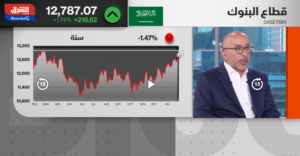With freehold buying, land value possibilities must always figure in calculations
A house is a house is a house. Or is it?
There exist myriad debates as to whether to buy old or new, budget or luxury, ready or offplan, as the financialization of economies gathered pace over the past 50 years. In financial history, speculation was always rife, but it was the railroads that were the first large corporations that were publicly traded.
In 1830, the New York Financial Exchange reported a total of 31 shares being traded. By 1850, that daily number had exceeded 30,000, and by 1860, average daily volumes crossed 150,000. As ownership spread to thousands of people, the principals asked themselves the question: if a trader could speculate in cattle and cotton, then why not in railroad stocks? And why not in real estate arbitrage?
In real estate literature, there is always this preference for purchasing ‘new builds’ despite the rising cost of building materials that accompany it. New builds incorporate newer technologies, are generally hassle-free for maintenance, and more recently, have become even more energy efficient.
Yet an economic analysis can bifurcate the investment into two distinct categories: land, which generally tends to appreciate over time, and the building, which tends to depreciate. With this line of logic, eventually the value of the land dominates over time, and the challenge for the investor/owner is to maintain the cost of the structure to the point where it exceeds the opportunity cost of renting or the ‘cost of money’.
An imbalance on costs
In buoyant markets, the emphasis on new builds reaches levels where ample funding necessitates the cost of building ‘plus’ is incorporated into the final purchase price, with the imputed price of land exceeding even those of established communities. This is particularly true of the luxury space.
This lowers the future return of these communities over time, leading to a U shaped return curvature. In the older communities, as the price of land continues to rise (and even exceed the value of the building above it), demand for such housing units rise. And usually accompanied by refurbishment costs.
It is for this reason that we see prices in areas like the Springs continue to overtake surrounding areas with similar builds in Arabian Ranches. Even in areas like the Greens, refurbished older units have narrowed their price differential to the newer offerings. By as much as 25 per cent, net of refurbishment costs.
Of course, these are boom times, and there is a wealth of data points that lead to all sorts of differing conclusions. But a time series analysis over longer periods unspools the differing goals of developers aiming to maximize their returns with those of investors looking for value. And end-users merely looking for a home to plant their roots and escape the tide of rising rents that have in many cases exceeded the cost of mortgage.
‘Assured returns’ make a comeback
The rush to newer builds has sparked a speculative phenomena in the luxury segment, but normalizing the price trends indicate growing demand for more established neighborhoods that have well maintained properties even though they are older. Unsurprisingly, this has led to developers increasing their incentives for newer builds that include assured returns and higher commissions to intermediaries.
In simple terms, the investor purchases a property with the golden rule of 70 per cent being the cost of the land in terms of the total purchase and 30 per cent being the cost of construction, with some variability. Once this equation starts to tilt significantly towards the latter, investors/end-users start entering into a zero sum game with developers.
This is accompanied by glitzy campaigns and the high priests of jargon analysis, which tends to obfuscate underlying simple truths and the data available for all to see when comparing to global benchmark cities like London, New York, Paris and even Mumbai. Value investors would do well to pay heed to this simple maxim to avoid the ‘madness of crowds’.
Sameer Lakhani
The writer is Managing Director of Global Capital Partners.





